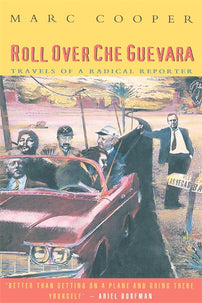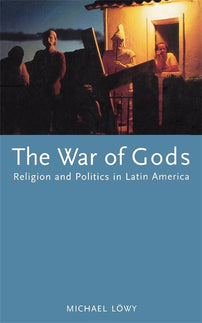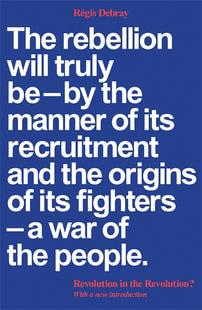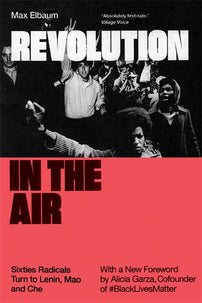A Turning Point for the Sandinistas: Nicaragua’s 1968
In 1968, Carlos Fonseca and the FSLN adopted a new strategic approach, laying the groundwork for the 1979 revolution.

1968 presented a turning point in world revolutionary politics. This was true in Latin America in particular. An Uruguayan theorist, Raúl Zibechi, argues that young men and women in this region were radicalized outside the traditional area of class consciousness, the factory; instead, Christian base communities, Guevarist militancy, and the modern disruption of traditional culture presented new avenues of political and social awareness. The significance of 1968 in Nicaragua has been somewhat neglected. At first glance, it seems that the crucial dates for this nation were 1959, the event of the Cuban revolution that inspired socialists to adopt a new militant strategy; and 1979, the year of the overthrow of the Somoza dictatorship. However, examination shows that 1968 was a pivotal moment of rethinking that set the stage for the Nicaraguan revolution.
In this year, Carlos Fonseca, the leader of the Sandinista National Liberation Front (FSLN), greatly altered his approach. Fonseca had maintained a loyal pro-Soviet position in the early years of his political activity; this changed drastically after the Cuban revolution, when he adopted an equally mechanical emulation of Che Guevara’s guerrilla warfare. One might argue that 1968 was the moment that the Sandinistas began to think for themselves and to adopt a much more original approach to preparation for revolution, one that could not be easily assimilated to previous formulas presented by the Soviet Union or Cuba. We might find that reinvestigating this moment could even help us to better understand the current dire circumstances in Nicaragua, where radical young people of today find themselves confronting a new authoritarian state, one that rules in the name of the FSLN.
In her book, Sandinista: Carlos Fonseca and the Nicaraguan Revolution (2000), Matilde Zimmermann has presented the most meticulous and detailed research on the evolution of Fonseca’s thinking and the FSLN’s strategies. In the early 1960s, Fonseca envisioned the FSLN as clandestine and armed; he imagined that they could only survive and triumph under dictatorial circumstances by secrecy, commitment, self-sacrifice, and militancy. In order to build this core of dedicated revolutionaries, Fonseca formed a Federation of Revolutionary Students, whose members were elected to the head of student government at Central American University in 1963. This accomplishment, however, was only meant to be a recruitment measure for foco armies.
Fonseca and his comrades aimed to lead radical students toward military training and a repetition of the twenty-five-month schedule that lead the 26th of July Movement to victory in Cuba. The Sandinista leadership obtained training by Cuban forces in order to equip them for this combat. They attempted a guerrilla campaign that same year; and the National Guard executed several of the students recruited by the FLSN. The leadership fled across the border to Honduras. When Fonseca returned to Nicaragua in 1964, he was arrested. The student movement launched into action with a solidarity campaign of marches, strikes, and media conferences. Fonseca’s courtroom declaration helped to build awareness and enthusiasm about the possibility of a socialist transformation of Nicaraguan society. He was then deported to Guatemala and subsequently to Mexico.
The failure of the first guerrilla campaign and Fonseca’s imprisonment clearly suggested the need for a change in approach; Cuban foquismo seemed to face a steep climb. From 1964 to 1966, the FSLN began to imitate the earlier reformist approach advocated by the official Communist party, the Socialist Party of Nicaragua (PSN). Chastised by the failure of ultra-leftism, it practiced a popular-front strategy, attempting to rally all of the forces in contradiction to Somoza. The positive effect of this period was that the student movement began to develop methods of improving the political consciousness of the community. They led initiatives to improve access to water and electricity and gave literacy classes. Some of their members later presented self-criticism, to the effect that their approach at this time was paternalistic. However, it seems that this was the beginning of an abandonment of some of the elitist preconceptions of foquismo and a more democratic approach to political change. Nonetheless, this was a provisional attempt; Fonseca came to believe that in this period the FLSN was in danger of losing the edge of its revolutionary critique, sliding into an accommodation with the state. Students made public protest at great cost. For example, at a baseball game in 1966, Sandinista and Social Christian students presented a banner declaring “No More Somoza!” The National Guard killed many of them immediately.
In the same year, Fonseca returned to Nicaragua. In 1967, the FSLN launched a second guerrilla campaign from the Pancasán region. After a few months, one of the three columns of the guerrilla army was destroyed by the National Guard and the survivors cancelled the operation. Again, this was entirely unsuccessful practically, but presented a certain limited symbolic significance. Student activists in the cities were again made aware that there was a political force in the country willing to die to oust Somoza. This second failure led to disagreements among the Sandinistas. While some continued to believe that only guerrilla warfare could liberate Nicaragua, others wished to reorient the movement toward non-violent political education. Fonseca attempted to plot a new course that would maintain elements of both of these possibilities. In 1967, the FSLN began to pursue urban military operations, such as bank robberies and an assassination of one of Somoza’s torturers. These Sandinista efforts had more success, but also led to many casualties for their own forces.
1968 was a crucial year because the organization intensified their political propaganda. They publicized their military actions as evidence of their commitment and strength. Fonseca wrote a series of manifestos, commemorating the deaths of Sandino and Che Guevara, supporting workers’ struggles, drawing attention to the needs of peasant and working-class women, and protesting U.S. imperial support for Somoza. While the FSLN had fewer than one hundred members, its political positions expressed an independent revolutionary orientation.
In April 1968, Fonseca composed a “Message to Revolutionary Students.” He argued that students had been misled by reformist elements, affected by “capitalist penetration” of education. He called for students to make concrete demands from the state for improvement of the educational system, and to enforce those demands by calling for support from the whole of society. Fonseca here began to emphasize the crucial role of students in revolutionary action. Prior to 1968, Fonseca tended to believe that students should leave the university to become soldiers who would operate from the countryside. In this period, however, he began to see students as a sector of society with more varied potential. In a nation where the majority of people had no higher education, the small number of people with access to learning have a responsibility to become “standard-bearers for the masses” who can articulate the broader desires of the working classes. Fonseca emphasized the need for a social revolution in Nicaragua. The necessary transformation could not be merely the replacement of Somoza, but rather a transformation of the relations of production in the country. At this time, reformist elements of the opposition to Somoza were much stronger than the FSLN. However, the new advocacy of political work in universities led to FSLN control of the student government in León two years later.
1968 also represented a crucial change in the FSLN’s relation to the traditional culture of Nicaragua and in particular toward religion. In the “Message to Revolutionary Students,” Fonseca invokes Camilo Torres as a guiding figure, alongside Marx, Guevara, and Augusto C. Sandino. Torres was a Colombian guerrilla priest who was martyred in 1966; he exemplified the new possibility of a shared perspective between Catholic and Marxist commitments. In 1967, Fonseca had begun meetings with Ernesto Cardenal, an avant-garde poet and priest, and these meetings continued throughout the next year. Fonseca convinced Cardenal to publicly denounce the state’s torture of revolutionaries and the execution of one of the FSLN’s student leaders, David Tejada. Cardenal fostered the development of a base community in the Solentiname Islands. At base communities of this type, peasants studied the Gospels and other writings in order to gain a more active perspective on their own circumstances and to become aware of the potential to transform the social oppression that condition their lives. In 1968, the collaboration between Fonseca and Cardenal presented a powerful new possibility, for liberation theology to found revolutionary practice.
In 1968, Fonseca called for active squads of the FLSN in all sectors of society — students at all levels, heavy industry, artisanal production, and the peasantry. This represented an implicit distancing from Guevara’s guerrilla strategy and a re-application of Vladimir Lenin’s emphasis on political education and activism against oppression. Fonseca was alert to the possibilities presented around the world by the social upheavals of 1968. He even referred to the Paris barricades of that year as a model for Nicaraguan insurrection. Fonseca also encouraged the participation of women, and fostered an anti-sexist culture within the movement, in which militants were aware of the exploitation of women and the problem of machismo. In the “Historic Program” of 1969, the FSLN called for land reform, social security, anti-corruption measures, anti-racist cultural change on behalf of Indians and blacks, emancipation of women, respect for religious beliefs, and solidarity with world anti-imperialist struggle, among other principles.
This shift toward political agitation of the Nicaraguan population as a whole was crucial for the success of the insurrection in 1979. Fonseca’s insights in 1968 deserve great credit for his recognition of the courage and self-activity of many diverse sectors of Nicaraguan society. However, the FSLN’s leadership during the revolutionary period of 1979 to 1990 became increasingly verticalist and hierarchical. They did not maintain principles of socialist democracy, and instead managed Nicaraguan capitalism according to the prerogatives of a one-party social-democratic state. The revolutionary period was significant for producing a new sense of national identity, and for partial defense of the realization of democratic institutions and participation by the masses of Nicaraguans. Unfortunately, the FSLN’s return to power under the command of Daniel Ortega and Rosario Murillo, in 2006, has emerged as a complete betrayal of the revolution and a return to caudillismo. As Dan La Botz writes in his recent book, What Went Wrong?: The Nicaraguan Revolution:
The Ortega regime’s authoritarianism is a variant of political bossism often found in Mexico and common in the United States in the late nineteenth and early twentieth centuries. For all the admiration he once had for Fidel Castro, Daniel Ortega ended up looking a lot more like Chicago Mayor Richard J. Daley of the 1950s and 60s.
Like the anti-Somoza struggle of the late 1960s, the new movement against Ortega that has taken place in Nicaragua this year — the April 19 Movement — draws strength from the commitment and self-sacrifice of students. The astonishing conflicts of today attest in part to Fonseca’s realization of 1968, that students in Nicaragua are among the best positioned to engage in political action for democratic change. In order to emerge successful, I believe that radical Nicaraguan students today will also need to take part in a broad struggle against all forms of oppression in Central American society, and ultimately to confront the economic relations that subtend corruption and authoritarian rule. In doing so, they will need to draw on the most democratic aspects of their own revolutionary heritage.
Andrew Ryder teaches at Texas Christian University. He has written numerous articles on Marxism, decolonization struggles in Latin America, and contemporary continental philosophy.





